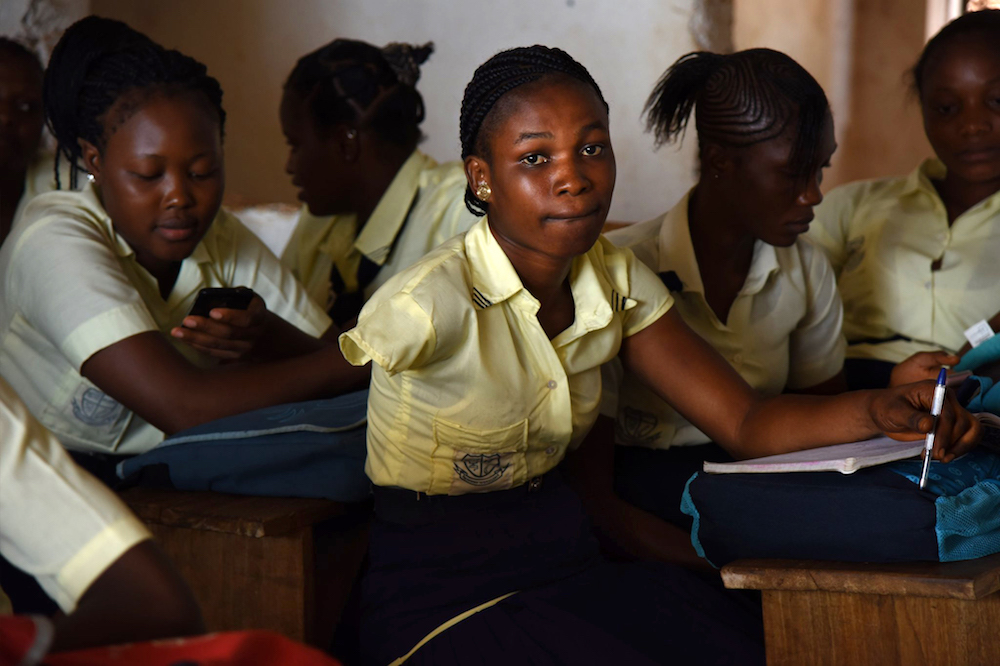
Bearing witness to child marriage and the ‘everyday brutality’ faced by girls around the world
Barriers to education, Child marriage, Children with disabilities, Girls' education, Right to education
Journalist Stephanie Sinclair has spent years recording the effects of child marriage and other abuses against girls in pictures that are both haunting and inspiring.
Stephanie Sinclair is a Pulitzer Prize-winning journalist known for gaining unique access to the most sensitive gender and human rights issues around the world.
Through her work, she portrays in a quiet and compelling way the lives of vulnerable girls subjected to practices such as child marriage, genital mutilation and acid attacks, with dignity, depth and empathy.
Her ongoing 15-year series “Too Young to Wed” delves into how child marriage has altered the fate of tens of thousands of young girls – and she has founded a nonprofit in the same name.

Stephanie was recently named the winner of the 2017 Anja Niedringhaus Courage in Photojournalism Award by the International Women’s Media Foundation. She will receive her award on June 8.
She says she tries to “confront the everyday brutality faced by young girls around the world”.
Here are some of the pictures that led the judges to say she showed “the emotional and intellectual courage required to continue to bear witness to scenes of despair”.

Portrait of sisters Yagana, 21, Yakaka 19, and Falimata, 14, in Maiduguri, Nigeria, in 2016. The girls were abducted and held captive for years by Boko Haram militants until each found moments to escape. The terrorist group drew global outrage after abducting more than 270 schoolgirls from the town of Chibok, forcing many into marriage and motherhood. In armed conflicts, child marriage is increasingly used as a weapon of war. Although 82 of the Chibok girls were freed recently, thousands of abducted girls and women remain missing in Nigeria with little help of rescue.

Zindiba, 19, attends school in Freetown, Sierra Leone, in 2016. Her arm was hacked off while, as a small child, she tried to protect her mother from combatants during Sierra Leone’s 11-year civil war. Her lifelong injuries will prevent her from many types of employment, she now hopes for support in continuing her education.

Young and adolescent girls take part in an alternative rites of passage ceremony, which does not include genital mutilation, in Mishanga, Sierra Leone, in 2016. Girls who participate in the programme receive a free education guaranteed by Mishanga Assistance Education, a Swiss nonprofit.

“Whenever I saw him, I hid. I hated to see him,” Tahini (in pink) recalls of the early days of her marriage to Mated, when she was six and he was 25. The young wife posed for this portrait with former classmate Ghana, also a child bride, outside their mountain home in Hajji, Yemen, in 2010. There is currently no minimum legal age of marriage in Yemen.

After celebrating with female relatives at a wedding party, Yemeni brides Sidebar, 11, and Galyak, 13, are veiled and escorted to a new life with their husbands in Hajji, Yemen, in 2010. According to Save the Children, one girl under 15 is married every seven seconds. Girls from poor families or affected by conflict or natural disasters are more likely to become child brides.

Ritu Saini (foreground), 21, and Rupa, 23, enjoy the monsoon rains atop a roof in Agra, India, in 2016. Both women are survivors of acid attacks. Hundreds of women and girls a year have been injured by acid in India. Formerly a volleyball player, Ritu was attacked by her cousin. After several reconstructive surgeries, she lost her left eye. Rupa was attacked when she was 15. The group Stop Acid Attacks advocates for policies to help acid-attack survivors.

Atop Ghazipur landfill, a 70-acre mountain of trash, seven-year-old Zarina salvages items to sell in Delhi, India, in 2016. Educating girls and young women is not only one of the biggest moral challenges of our generation, it is also a necessary investment for a peaceful and poverty-free world.

Girls’ education
More news

Technology has the power to expand education for children with disabilities
